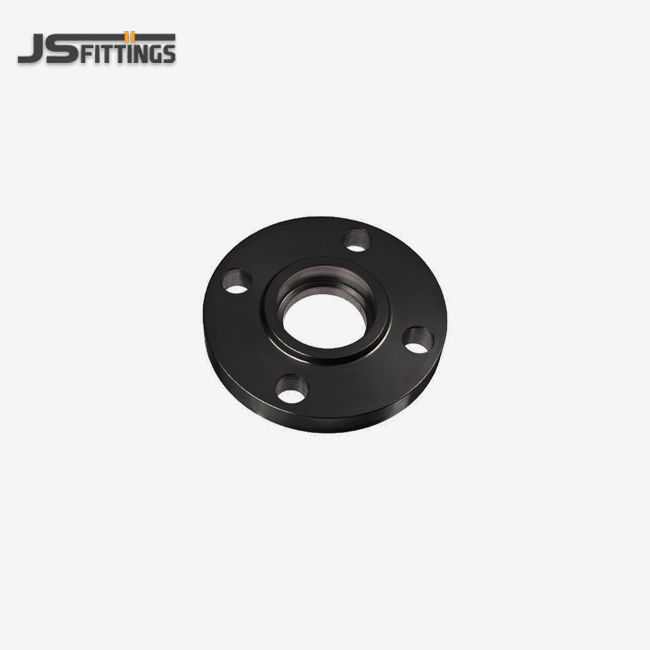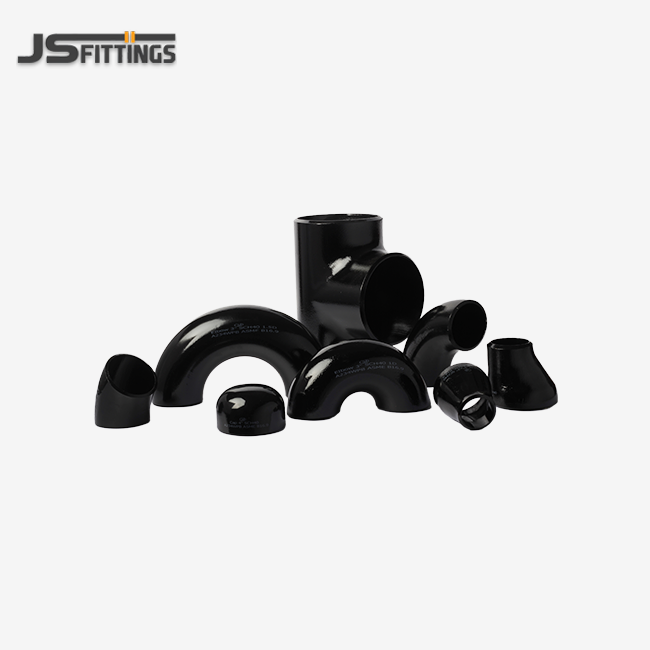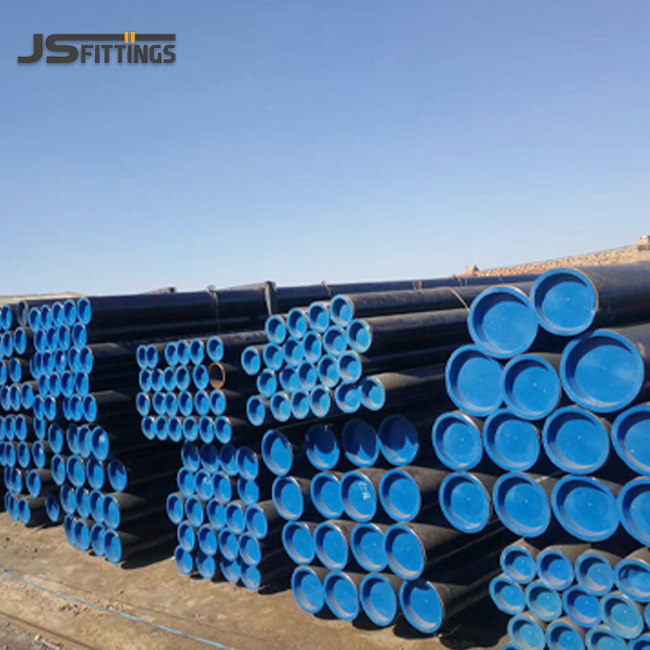Quality and compliance are the most important things to look for when looking for the best GOST 17375 buttweld pipe elbows for industrial use. These well made parts are very important in piping systems for oil refineries, chemical industries, and infrastructure projects. The GOST 17376 Buttweld Pipe Elbow is the best choice for use in the Russian and CIS markets since it is more durable and works better. Our in-depth study has found five outstanding items that exceed strict international requirements and offer affordable solutions for tough industrial settings.
Selection Criteria for Best GOST 17376 Buttweld Pipe Elbows
When we evaluate, we look at a number of things that affect long-term performance and project success. Material composition is the most important factor since carbon steel, alloy steel, and stainless steel are all good for different uses. The quality of the surface treatment influences how well it resists corrosion and how long it lasts in tough conditions.
The accuracy of manufacturing impacts how well the installation works and how reliable the joints are. The GOST 17376 Buttweld Pipe Elbow standard for dimensional accuracy ensures that parts fit together correctly without the need for expensive changes in the field. Certification compliance demonstrates that there are quality management systems and testing processes in place that back up performance claims.
For scheduling and keeping costs down, it's important that the supply chain is reliable. Contractors can achieve tight deadlines when suppliers have steady stock levels and delivery alternatives that can change. For complicated projects, having technical support skills like engineering help and good documentation quality is quite helpful.
Price competitiveness weighs the price of buying something against the costs of owning it. Premium products cost more at first, but better materials and production can frequently provide better long-term value by requiring less maintenance and lasting longer.

Top 5 GOST 17376 Buttweld Pipe Elbows
1. JS FITTINGS Premium Carbon Steel 90° Elbow
JS FITTINGS manufactures premium carbon steel elbows that exceed GOST 17376 Buttweld Pipe Elbow standard requirements through advanced metallurgy and precision machining. These seamless pipe elbows feature uniform wall thickness and smooth internal surfaces that minimize pressure drops and turbulence.
Key Features:
- Material: ASTM A234 WPB carbon steel with superior impact resistance
- Size Range: 1/2" through 48" diameter with custom options available
- Pressure Rating: Class 150 through 2500 for diverse applications
- Surface Treatment: Sandblasting plus anti-rust oil coating for enhanced protection
- Certifications: ISO 9001, CE/PED 2014/68/EU, GOST-R compliance verified
Manufacturing excellence distinguishes these products through hot forming processes that maintain grain structure integrity. Quality control includes 100% dimensional inspection and hydrostatic testing at 1.5 times working pressure. Chemical composition analysis ensures consistent material properties across production batches.
Customer feedback highlights exceptional durability in petrochemical applications where thermal cycling and corrosive media challenge inferior products. Installation teams appreciate precise dimensions that reduce welding preparation time and improve joint quality. The protective coating system extends service life in offshore and industrial environments.
2. Heavy-Duty Stainless Steel Long Radius Elbow
Stainless steel pipe elbow options provide superior corrosion resistance for chemical processing and food industry applications. The 316L grade offers exceptional performance in chloride environments where carbon steel fails rapidly.
Key Features:
- Material: 316L stainless steel with low carbon content for weldability
- Radius: Long radius design (1.5D) reduces pressure losses
- Finish: Pickled and passivated surface with 32 Ra roughness
- Temperature Range: -196°C to +600°C operating capability
- Documentation: Complete material test certificates and PMI reports
Advanced forming techniques preserve austenitic structure while achieving precise geometry. Solution annealing treatment optimizes corrosion resistance and mechanical properties. Non-destructive testing includes penetrant inspection to detect surface defects that could propagate during service.
Performance data shows excellent resistance to pitting and crevice corrosion in seawater applications. The long radius configuration reduces energy losses and erosion concerns in high-velocity systems. Premium surface finish prevents bacterial growth in sanitary applications where cleanliness is critical.
3. Alloy Steel High-Temperature Elbow Fitting
Alloy steel construction enables operation at elevated temperatures where standard materials lose strength. Chrome-molybdenum composition provides creep resistance essential for power generation and petrochemical applications.
Key Features:
- Material: ASTM A234 WP11 alloy steel with 1.25Cr-0.5Mo composition
- Temperature Rating: Continuous service up to 595°C
- Heat Treatment: Normalized and tempered for optimal properties
- Testing: Impact testing at service temperature validates toughness
- Traceability: Heat number tracking from raw material through delivery
Specialized heat treatment cycles develop fine-grain microstructures that resist thermal fatigue. Careful chemistry control prevents carbide precipitation that reduces toughness. Stress relief procedures eliminate residual stresses from forming operations.
Field experience demonstrates reliable performance in steam systems and hydrocarbon processing units. The material maintains strength at operating temperatures while resisting hydrogen attack and sulfidation. Proper welding procedures ensure joint properties match base material performance.
4. Large Diameter Seamless Pipe Elbow
Large diameter applications require specialized manufacturing capabilities to maintain dimensional accuracy and material integrity. Seamless construction eliminates weld seam concerns while providing uniform properties throughout the component.
Key Features:
- Size Range: 24" through 60" diameter capability
- Wall Thickness: Schedule 10 through XXH available
- Manufacturing: Hot forming from seamless pipe blanks
- Inspection: Ultrasonic testing validates wall thickness uniformity
- Handling: Specialized packaging prevents deformation during transport
Advanced forming equipment maintains circular cross-sections while achieving required bend angles. Computer-controlled heating ensures uniform temperature distribution during forming operations. Post-form machining corrects any dimensional variations to meet tight tolerances.
Installation benefits include reduced welding time due to precise end preparation. The seamless construction provides confidence for critical applications where failure consequences are severe. Custom configurations accommodate unique piping layouts without compromising performance.
5. Compact Short Radius Industrial Elbow
Space-constrained installations benefit from short radius designs that reduce overall piping system footprints. These compact fittings maintain adequate flow characteristics while enabling tighter routing configurations.
Key Features:
- Radius: 1.0D short radius for space-limited applications
- Angles: 45° and 90° options for flexible system design
- Reinforcement: Increased wall thickness compensates for stress concentration
- Coating: Epoxy coating system for enhanced corrosion protection
- Assembly: Pre-fitted with backing rings for welding convenience
Finite element analysis optimizes wall thickness distribution to manage stress concentrations. Special attention to internal contours minimizes turbulence and erosion potential. Quality coating application provides long-term protection in aggressive environments.
Economic advantages include reduced piping material requirements and simplified support structures. Maintenance access improves due to more compact system layouts. Performance monitoring shows acceptable pressure losses for most industrial applications.
Regional Market Analysis and Preferences
Understanding regional markets helps suppliers adapt products and services to local requirements. Each geographic area presents unique challenges related to climate, regulations, and infrastructure development patterns.
- Latin America: Rapid industrialization drives demand for reliable piping components in mining, oil refining, and petrochemical sectors. Brazilian PETROBRAS approval opens significant market opportunities. Local content requirements favor suppliers with regional manufacturing capabilities. Hot, humid climates necessitate superior corrosion protection systems. The GOST 17376 Buttweld Pipe Elbow standard is increasingly becoming a preferred specification for ensuring consistent quality in industrial applications.
- Canada: Stringent safety regulations require comprehensive certification and testing documentation. Cold weather operation demands materials with excellent low-temperature toughness. Oil sands projects require specialized coatings resistant to bitumen and process chemicals. Environmental regulations favor eco-friendly surface treatments.
- Africa: Infrastructure development creates substantial market growth potential. Limited maintenance capabilities favor robust designs with extended service intervals. Local procurement preferences support suppliers offering training and technical support. Dust and extreme temperatures challenge standard coating systems.
- Southeast Asia: High humidity and salt exposure require enhanced corrosion protection. Seismic activity demands materials with superior impact resistance. Rapid industrial growth creates opportunities in power generation and chemical processing. Quality certifications help differentiate premium products in price-sensitive markets.
- Central Asia and CIS: GOST compliance remains mandatory for most industrial projects. Extreme temperature variations test material performance limits. Energy sector investments drive demand for high-pressure rated components. Established supply relationships and local representation provide competitive advantages.
- Middle East: High-temperature, high-pressure applications dominate in oil and gas processing. Sand and salt environments challenge surface protection systems. ADNOC and similar approvals validate quality for major projects. Long-term supply agreements provide market stability for qualified suppliers.
Purchasing Recommendations and Considerations
Successful procurement requires balancing immediate needs against long-term project requirements. Initial cost comparisons should include installation, maintenance, and replacement expenses to determine true value propositions.
Supplier qualification involves evaluating manufacturing capabilities, quality systems, and track record with similar applications. Site audits verify claimed certifications and production processes. Reference projects provide insights into real-world performance and support quality.
Technical specifications must address operating conditions, material compatibility, and installation requirements. Over-specification increases costs unnecessarily, while under-specification risks premature failures. Engineering consultation helps optimize selections for specific applications.
Supply chain management considerations include inventory levels, lead times, and emergency replacement capabilities. Multiple supplier strategies reduce risks while maintaining competitive pricing. Long-term agreements provide price stability and priority allocation during tight supply periods.
Documentation requirements vary by project and geographic location. Complete material test certificates, dimensional inspection reports, and welding procedure specifications support quality assurance programs. Proper documentation facilitates troubleshooting and warranty claims when needed.
Conclusion
When choosing the best GOST 17376 buttweld pipe elbows, you need to think carefully about the needs of the application, the attributes of the materials, and the abilities of the provider. The five products that were looked at are all established solutions that work well in a variety of industrial settings. Local knowledge is important for project success since regional market variables affect material selection and specification requirements.
In competitive markets, premium providers stand out because they have quality certifications, precise manufacturing, and full technical support. Initial costs can be different, but long-term value depends on how reliable the performance is, how much maintenance is needed, and how quickly the supplier responds. Buying certified materials from well-known companies lowers the risks of a project while making sure that it follows all international rules and standards.
Frequently Asked Questions
Q1: What distinguishes GOST 17376 buttweld pipe elbows from other international standards?
A: GOST 17376 standard specifies unique dimensional tolerances, material requirements, and testing procedures developed for Russian and CIS market applications. These fittings feature metric sizing, specific chemical compositions, and manufacturing processes optimized for local industrial requirements. The standard emphasizes robust construction suitable for harsh operating environments common in energy and heavy industry sectors.
Q2: How do I select appropriate wall thickness for my application?
A: Wall thickness selection depends on operating pressure, temperature, and safety factor requirements. Calculate minimum thickness using applicable pressure vessel codes, then add corrosion allowances and safety margins. Consider stress concentrations at elbow locations that may require increased thickness compared to straight pipe sections. Consult with qualified engineers for critical applications where failures could have serious consequences.
Q3: What surface treatments work best for marine and offshore applications?
A: Marine environments require multi-layer coating systems beginning with proper surface preparation through sandblasting. Zinc-rich primer provides galvanic protection, while epoxy intermediate coats offer barrier protection against moisture penetration. Polyurethane topcoats resist UV degradation and mechanical damage. Regular inspection and maintenance programs extend coating life in aggressive salt water environments.

Partner with JS FITTINGS for Premium GOST 17376 Buttweld Pipe Elbow Solutions
Hebei Jinsheng Pipe Fitting Manufacturing Co., Ltd brings over four decades of expertise to your most demanding industrial piping projects. Our comprehensive product portfolio includes premium GOST 17376 Buttweld Pipe Elbow options engineered for superior performance and reliability. With certifications from ISO 9001, CE/PED 2014/68/EU, and GOST-R, plus approvals from NIOC, ADNOC, and PETROBRAS, we deliver the quality assurance your projects demand.
As a trusted GOST 17376 Buttweld Pipe Elbow supplier, we maintain extensive inventory levels and flexible production capabilities to meet urgent project requirements. Our technical team provides comprehensive engineering support throughout the specification and selection process. Advanced quality control systems ensure every component meets stringent performance standards before shipment.
Custom sizing capabilities and specialized materials address unique application requirements while maintaining competitive pricing structures. Complete technical documentation supports your quality assurance programs and regulatory compliance needs. When project success depends on reliable piping components, contact us at admin@chinajsgj.com to discuss your specific requirements with our technical specialists.



